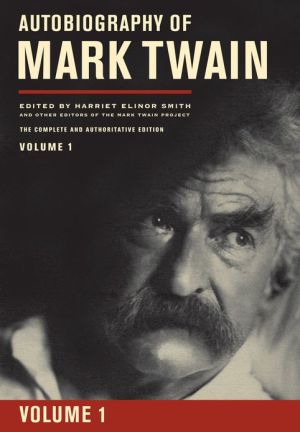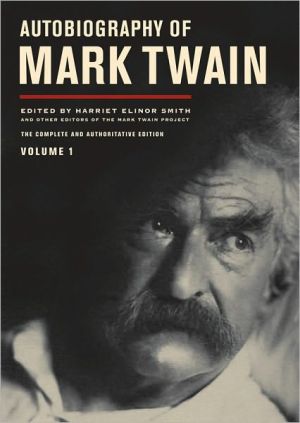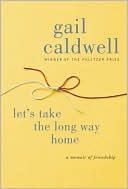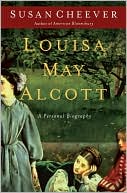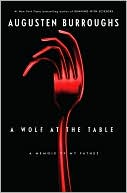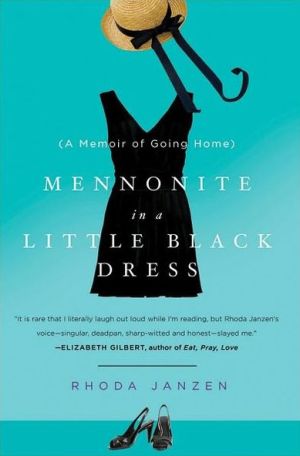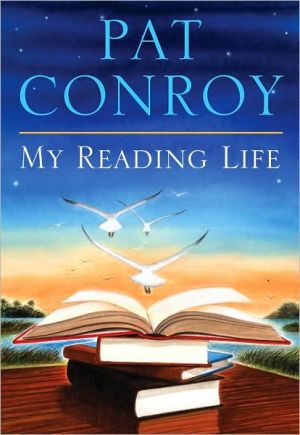Let Me Finish
Widely known as an original and graceful writer, Roger Angell has developed a devoted following through his essays in the New Yorker. Now, in Let Me Finish, a deeply personal, fresh form of autobiography, he takes an unsentimental look at his early days as a boy growing up in Prohibition-era New York with a remarkable father; a mother, Katharine White, who was a founding editor of the New Yorker; and a famous stepfather, the writer E. B. White.\ Intimate, funny, and moving portraits form the...
Search in google:
Here, at home inside a Jane Austen novel, I passed my college weekends, carving Sunday roasts and getting the station wagon serviced, explaining the double finesse in bridge, lacing up ice skates, sharing by radio the fall of Paris and the night bombings of London. . . having fallen not just in love but into a family.—from Let Me Finish Roger Angell has developed a broad and devoted following through his writings in the New Yorker and as the leading baseball writer of our time. Turning to more personal matters, he has produced a fresh form of autobiography in this unsentimental look at his early days as a boy growing up in Prohibition-era New York with a remarkable father; a mother, Katharine White, who was a founding editor of the New Yorker; and a famous stepfather, the writer E. B. White. Intimate, funny, and moving portraits form the book's centerpiece as Angell remembers his unusual relatives, his attachment to baseball in the time of Ruth and Gehrig and the young Joe DiMaggio, and his vivid colleagues during his long career as a New Yorker writer and editor. Infused with pleasure and sadness, Angell's new book offers a fresh view of the insistence of memory. "Like it or not," he writes, "we geezers are not the curators of this unstable repository of trifling or tragic days but only the screenwriters and directors of the latest revival." The Washington Post - Jonathan Yardley So: a lovely book and an honest one. What Angell writes may or may not be "true," but it contains truths: about loyalty and love, about work and play, about getting on with the cards that life deals you. It's also a genuinely grown-up book, a rare gem indeed in our pubescent age.
Romance\ \ \ One spring Saturday when I was seven going on eight, my mother brought me with her on an automobile outing with her young lover and future husband, E. B. White. She took our family car, a slope-nosed Franklin sedan, and we must have met Andy by prearrangement at our garage. He did the driving. We left New York and went up into Westchester County for lunch—this was 1928 and it was still mostly country. On the way back, my mother, who had taken the wheel, stripped the gears while shifting, and we ground to a halt, halfway onto a shoulder of the Bronx River Parkway. Disaster. Andy thumbed a ride to go find a tow truck, and my mother, I now realize, was left to make this into an amusing story to tell my father and my older sister at dinner that evening. She almost never drove—thus the screeching and scraping sounds beneath us and the agonized look on her face when she got lost in mid-shift and we broke down. It was also unusual, an adventure, for me to be alone with her and her office friend Mr. White, as she’d described him. I think I wasn’t meant to be there; maybe a Saturday date with a schoolmate had fallen through, and she’d had no recourse but to bring me along. But she never would have taken me off on an outing that would require me to lie about it to my father afterward, so the trip must have been presented to him beforehand as a chance for her to practice her driving, with the reliable Andy White as instructor. I had no idea, of course, that she and I were stranded in a predicament, but I recall sitting beside her on the running board of the ticking, cooling Franklin while we waited, with the pale new shrubs and pastoral grasses of the Parkway around us, and the occasional roadster or touring car (with its occupants swiveling their gaze toward us as they came by) swooshing past. Then a tow truck appeared around the curve behind us, with Andy White standing on the right-hand running board and waving excitedly. Yay, I’m back, we’re rescued! My father would never have done that—found a tow so quickly or waved like a kid when he spotted us.\ \ The story stops here. I don’t remember that night or anything else about our little trip, but in less than two years my parents were divorced and my mother and Andy married and living on East Eighth Street. They soon had their own car, or cars: they kept changing. The Depression had arrived, but they were a successful New Yorker couple—she a fiction editor; he a writer of casuals and poetry and the first-page Comment section—and they loved driving around in an eight-year-old Pierce-Arrow touring car, with a high-bustle trunk, side mirrors, and flapping white roof. After their son was born—my brother Joel—they moved up to a staid seven-passenger Buick sedan. In the mid-thirties, Andy also acquired a secondhand beige-and-black 1928 Plymouth roadster—country wheels, used mostly around their place in Maine. The Buick still mattered to him. Back when it was new, thieves stole it out of a garage on University Place one night and used it in a daring bank stick-up in Yonkers. Andy was upset, but when he read an account of the crime in the newspapers the next day, with a passage that went “and the robbers’ powerful getaway car swiftly outdistanced police pursuers,” he changed sides. “C’mon, Buick!” he said. “Go!”\ Every family has its own car stories, but in another sense we know them all in advance now, regardless of our age. The collective American unconscious is stuffed with old Pontiacs, and fresh reminders are never lacking. Weekend rallies flood the Mendocino or Montpelier back roads with high-roofed Model A’s and Chevys, revarnished 1936 Woodies, and thrumming, leaf-tone T-Birds; that same night, back home again or with our feet up at the Hyatt, we click onto TCM and find The Grapes of Wrath, or Bonnie and Clyde, or Five Easy Pieces, or Thelma & Louise, waiting to put us out on the narrow, anachronism-free macadam once again. (A friend of mine used to drive around the Village in his 1938 De Soto hearse, except when it was out on lease to still another Godfather movie.) Grandchildren, clicking to 50 Cent or Eminem on their iPods in the back seat, sigh and roll their eyes whenever the old highwayman starts up again. Yes, car travel was bumpier and curvier back then, with more traffic lights and billboards, more cows and hillside graveyards, no air-conditioning and almost no interstates, and with tin cans and Nehi signs and red Burma-Shave jingles crowding the narrow roadside. Give us a break.\ \ Still, we drove, and what startles me from this great distance is how often and how far. I was a New York City kid who knew the subways and museums and movie theatres and zoos and ballparks by heart, but in the 1930s also got out of town a lot, mostly by car. I drove (well, was driven) to Bear Mountain and Atlantic City and Gettysburg and Niagara Falls; went repeatedly to Boston and New Hampshire and Maine; drove to a Missouri cattle farm owned by an uncle; drove there during another summer and thence onward to Santa Fe and Tesuque and out to the Arizona Painted Desert. Then back again, to New York. Before this, in March, 1933—it was the week of Franklin Delano Roosevelt’s first inaugural—I’d boarded a Greyhound bus to Detroit, along with a Columbia student named Tex Goldschmidt, where we picked up a test-model Terraplane sedan at the factory (courtesy of an advertising friend of my father’s who handled the Hudson-Essex account) and drove it back home. A couple of months later, in company with a math teacher named Mr. Burchell or Burkhill and four Lincoln School seventh-grade classmates, I crammed into a buckety old Buick sedan and drove to the Century of Progress Exposition in Chicago; we came back by way of Niagara Falls, and, because I had been there before and knew the ropes, took time also to visit the Shredded Wheat factory, some tacky mummies, and a terrific fifty-cent roadside exhibition of dented and rusty, candy-wrapper-littered barrels and iron balls in which various over-the-brink daredevils had mostly met their end. With one exception, all of us in our party were still speaking.\ \ If I now hop aboard some of these bygone trips for a mile or two, it is not for the sake of easy nostalgia—the fizz of warm moxie up your nose; the Nabokovian names of roadside tourist cottages; the glint of shattered glass and sheen of blood around a tree-crumpled gray Reo; or the memory of collies and children, unaccustomed to auto-motion, throwing up beside their hastily parked family vehicles—but in search of some thread or path that links these outings and sometimes puts Canandaigua or Kirksville or Keams Canyon back in my head when I wake up in the middle of the night. Effort can now and then produce a sudden fragment of locality: the car stopped and me waking up with my sweating cheek against the gray plush of the back seat, as I stare at a mystifying message, “VEEDOL,” painted on a square of white tin so bright in the sun that it makes me wince. Veedol? Beyond it, against the stucco gas-station wall, is a handmade sign, wavery in the gasoline fumes rising outside my window. Where are we? I want to sit up and ask my father, standing out there in his sneakers, khaki pants, and an old shirt with rolled-up sleeves, who is fishing his thick brown wallet—we’re on a long haul to somewhere—out of a hip pocket, but I’m too dazed to speak.\ \ The first day of that 1933 school trip to the Chicago World’s Fair went on forever, and it was after dark when we topped a hillside in Ligonier, Pennsylvania, slowed at the vision of Pittsburgh alight in the distance, and felt a little lurch and jolt as the right rear wheel fell off the Buick and rolled gently on ahead for a few yards by itself. I can’t remember dinner, but it was past midnight when, rewheeled, we pulled up at the McKeesport YMCA and settled for two double rooms, plus cots. Jerry Tallmer, a surviving member of the party, tells me that a fellow traveler, less suave than the rest of us, confessed to him later that until this moment he’d held a childhood notion that if you weren’t in bed by midnight you died. Out in Chicago, we took in the House of Tomorrow and Buckminster Fuller’s Dymaxion Car; ogled Sally Rand’s “Streets of Paris” but didn’t attend; went to the Museum of Natural History; laughed at Chicago’s dinky elevated cars; and in our little notebooks wrote down that Depression soup kitchen lines in Chicago looked exactly like the ones in depressed New York. We were smart and serious, and would be expected to report on this trip in Social Studies, come fall. The Century of Progress, we concluded, was mostly about advertising. One afternoon, the temperature went down twenty-nine degrees in an hour and a half as a black storm blew in from over Lake Michigan; the next morning we read that the sightseeing plane whose ticket window we’d seen at the Fair had crashed, killing all aboard. Three days later, wheeling south from Niagara Falls, my companions (including the heroic Burkhill or Burchell, who did all the driving) offered to pay me two dollars apiece if I’d just shut up for a change, and not speak another word for the rest of the trip. Unaffronted and short of cash, I agreed, and collected my princely ten bucks while we were passing under the new George Washington Bridge, just about home.\ Copyright © 2006 by Roger Angell\ \ All rights reserved. No part of this publication may be reproduced or transmitted in any form or by any means,\ electronic or mechanical, including photocopy, recording,\ or any information storage and retrieval system, without permission in writing from the publisher.\ \ Requests for permission to make copies of any part of the work should be mailed to the following address:\ Permissions Department, Harcourt, Inc.,\ 6277 Sea Harbor Drive, Orlando, Florida 32887-6777.
Introduction 1Romance 5Movie Kid 21The King of the Forest 29Twice Christmas 52Early Innings 57Consultation 80We Are Fam-ilee 92Andy 113Getting There 138Dry Martini 156Permanent Party 165Ancient Mariner 194La Vie en Rose 203At the Comic Weekly 215Working TypesOh, ChristMs. UlyssesG.B.Here Below 257Jake 274Hard Lines 287
\ From Barnes & NobleWe would consider Roger Angell a national treasure for his superb baseball books alone. But the truth is, Angell is much more than a sportswriter. Sprung from impressive stock (his mother was the famous literary editor Katherine Sergeant Angell; his stepfather, the legendary E. B. White), this longtime New Yorker staffer has been delighting readers with his elegant, elegiac essays for more than 40 years. Falling midway between a bona fide memoir and a gathering of personal recollections, this wonderful book includes warmhearted reflections on Angell's childhood; his exceptional relatives, friends, and colleagues; and his long, satisfying career in the family business.\ \ \ \ \ Jonathan YardleySo: a lovely book and an honest one. What Angell writes may or may not be "true," but it contains truths: about loyalty and love, about work and play, about getting on with the cards that life deals you. It's also a genuinely grown-up book, a rare gem indeed in our pubescent age.\ — The Washington Post\ \ \ Publishers WeeklyOver the past few years, New Yorker readers have been treated to the occasional personal reflection from Angell, stepping outside his usual baseball beat to write about such intimacies as his passion for sailing or his childhood fascination with the movies. It's the family drama that's of most immediate interest, as Angell recalls the divorce of his parents, Ernest and Katherine Angell, and his mother's subsequent remarriage to E.B. White, affectionately known as Andy. Or perhaps readers will be more eager to hear about life at the New Yorker, especially since Angell admits, "I no longer expect to write" much more about his fellow writers and editors than the miniature portraits collected here (but thankfully we do have such scenes as the visit he and S.J. Perelman paid to W. Somerset Maugham while vacationing in France in 1949). Whatever the subject, Angell writes with his customary elegance and modesty; "I've kept quiet about my trifling army career all these years," he says in one essay, just before spinning off a series of captivating anecdotes about his WWII service. The assembled pieces add up to a fine memoir. (May 8) Copyright 2006 Reed Business Information.\ \ \ \ \ Library JournalCertainly not a biography and not strictly a memoir, this book by famed baseball writer and New Yorker fiction editor Angell (Game Time) is nonetheless a fully realized story that is frequently memorable and free of predictable prose, managing with wit and charm to enlarge the little things of everyday life (albeit in Angell's case, a privileged life). His recollection of his book-, movie-, and baseball-loving boyhood is warm but never fuzzy; likewise are his profiles of his Wall Street lawyer father, Ernest; his mother, Katharine, also an editor at The New Yorker; and Katharine's second husband, author E.B. White. A little of the heart, mind, and soul are revealed in Angell's disarming and telling snapshots of his Aunt Elsie, his mother's individualistic older sister, and of his father's free-spirited younger sister, Aunt Hildegard. Angell has hobnobbed with the famous, but they are mentioned as casually and naturally as if they were neighbors, relatives, or folks met on a holiday. Several of these chapters have already appeared in The New Yorker, but no matter; any reading of Angell's writing remains fresh, lively, and appealingly thoughtful. Recommended for public libraries. [See Prepub Alert, LJ 1/06.]-Robert Kelly, Fort Wayne Community Schs., IN Copyright 2006 Reed Business Information.\ \ \ \ \ Kirkus ReviewsA collection of personal pieces, combined into an affecting memoir by longtime New Yorker editor Angell. The author, a noted baseball writer (A Pitcher's Story, 2001, etc.), has many intimate connections to the magazine Gardner Botsford once dubbed "The Comic Weekly," in which most of these reminiscences originally appeared. His mother, Katherine, was the New Yorker's fiction editor; years later, Angell held her former job-and occupied her office. His stepfather, E.B. White, was the magazine's most important contributor during its most influential years. The memoir mostly concerns New Yorker colleagues and other remarkable people who have been a part of the author's life. His father, lawyer Ernest Angell, lost Katherine to the younger White but over the years became a figure of immense importance to Roger. Angell loved his mother, loved White, loved his first wife (not much here about the cause of their 1960s divorce), loved his coworkers, loved his job. His portraits are really tributes, whether of the well-known William Maxwell, V.S. Pritchett, Harold Ross or William Shawn, or the lesser-known Botsford and Emily Hahn. Angell offers some New Yorker-insider tidbits (Ian Frazier mimicked Shawn's voice so well that he could fool colleagues over the phone) and a bit more than you want to know about some of his aunts, one of whom wrote a book about Willa Cather. A dazzling story-within-a-story describes a 1940 round of golf with a mysterious woman who lost a valuable ring. The author seems uncertain how an iPod works but reveals an expertise with machine guns. His fickle memory frustrates and bemuses him. Sometimes he can recall only sensory images; sometimes the story unreeling in his mindskips, stops, fades, dissolves into something else. In several of his most appealing passages, he writes about the fictions that memory fashions. Graceful and deeply felt.\ \

